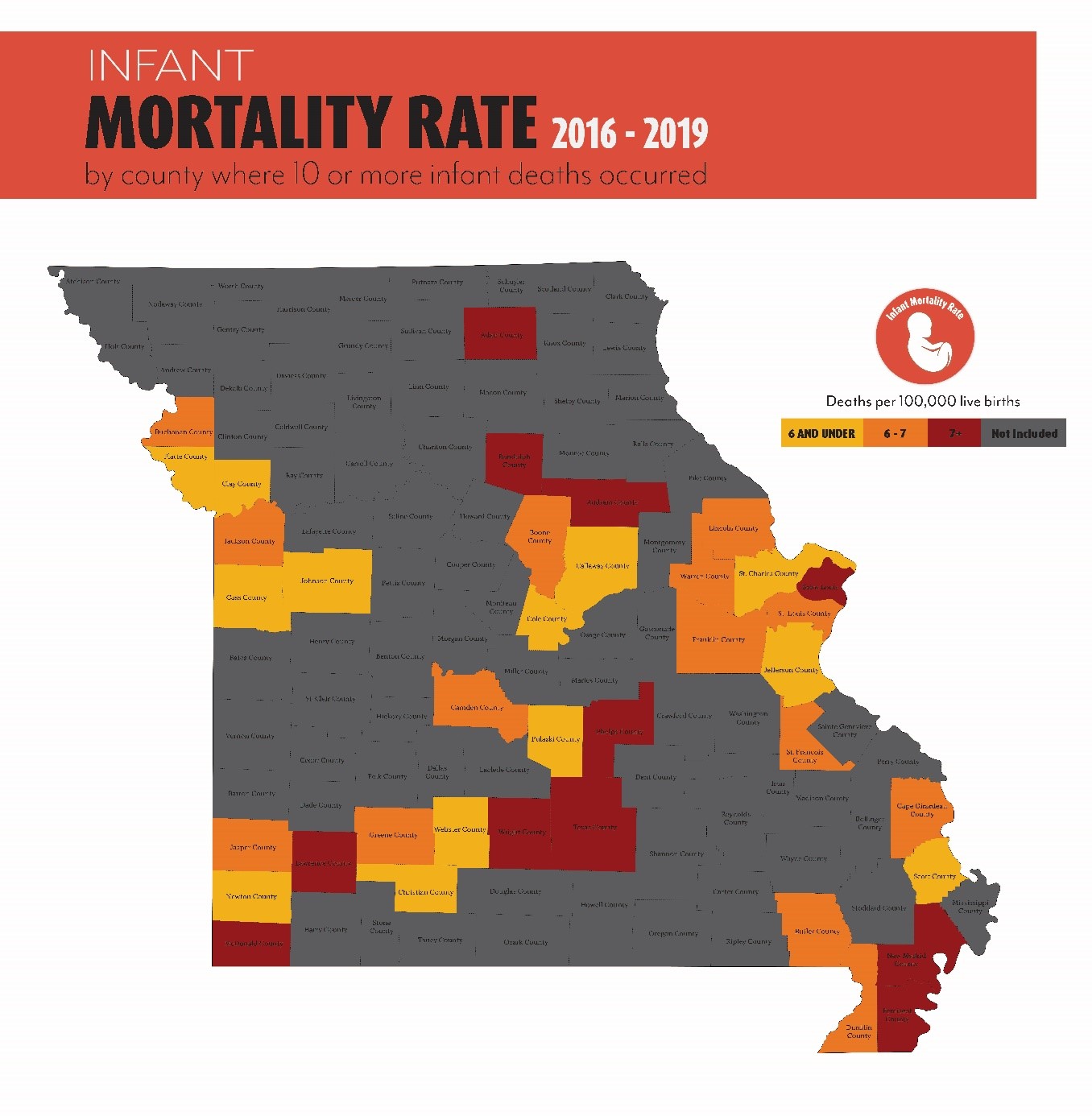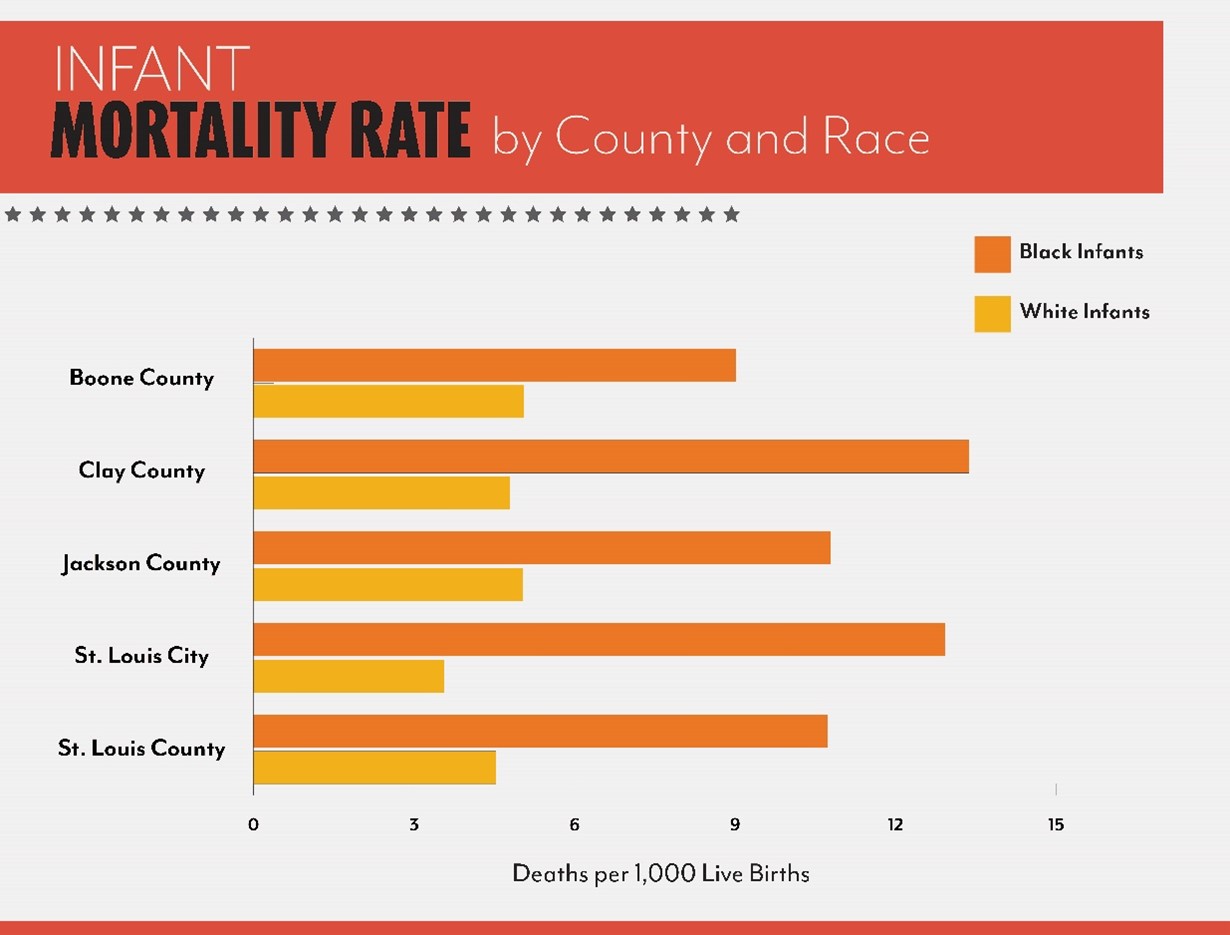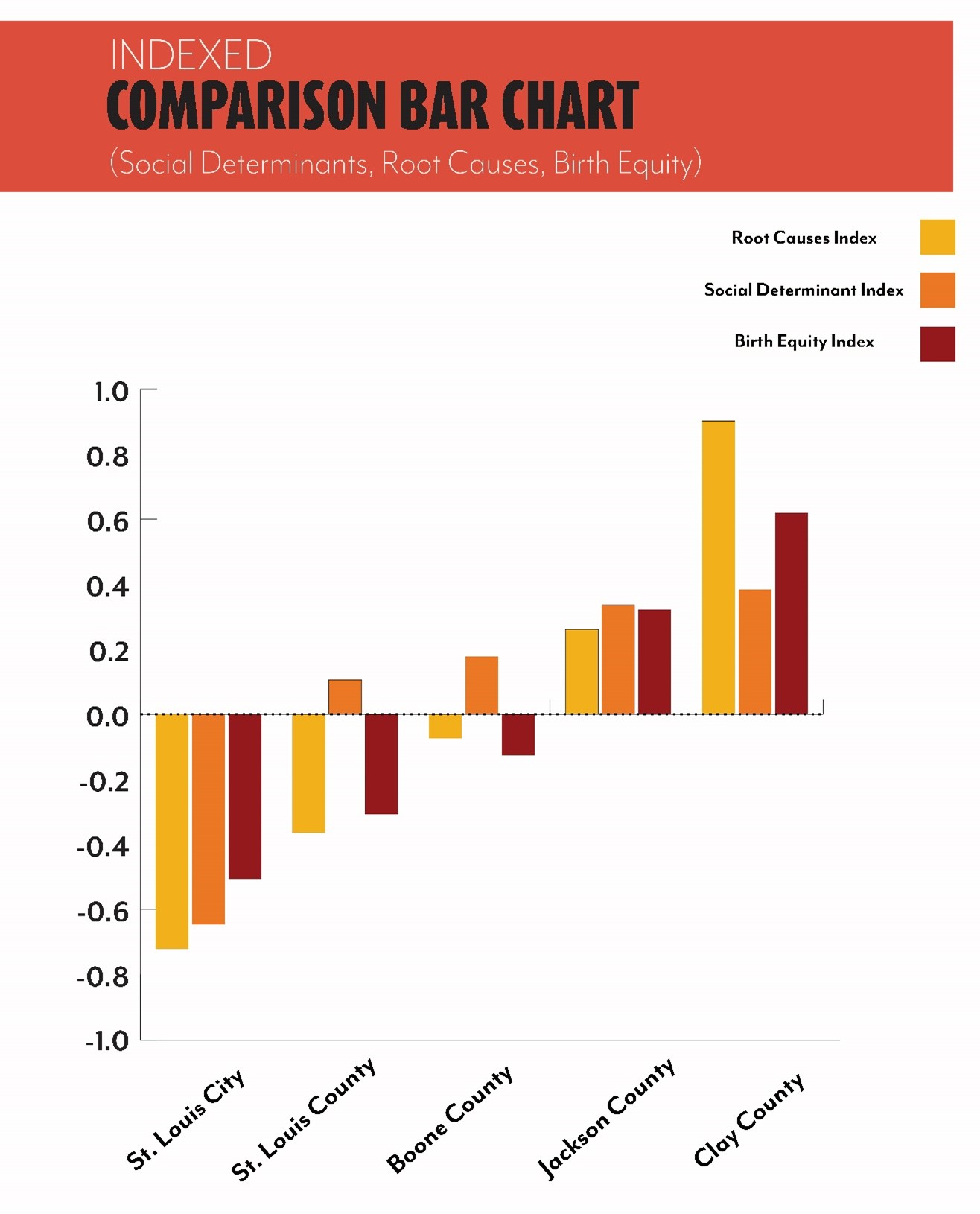Birth Equity is the assurance of the conditions of optimal births for all people with a willingness to address racial and social inequities in a sustained effort.
Why Black Infants Struggle To FLOURISH
Centuries of racism have a direct impact on the health of Black families today. St. Louis is the sixth most segregated metro area in the United States, which makes it a particularly difficult place to be born Black. Read more about the causes of infant mortality in St. Louis and explore data that helps explain the factors contributing to maternal and infant health outcomes.
The Birth Equity Index
In partnership with St. Louis Integrated Health Network, the National Birth Equity Collaborative (NBEC) prepared a report on birth equity. The Birth Equity Index is a mixed methods tool to identify social determinants of health, root causes and their impact on Black infant mortality in St. Louis. The index combines values of these indicators into an overall index of birth equity. The score describes how a community’s social conditions impact birth outcomes for Black infants and families. A score closer to 1 means that Black infants experience greater equity to live to their first birthday.
Calculating the Birth Equity Index
The Birth Equity Index examines root causes and social determinants of health and their impact on Black infant mortality in Missouri Counties from 2016-2019. Each index combines multiple indicators into a single metric. The Root Causes Index combines structural determinants of health, such as, criminal justice, education, earnings, gender inequality in earnings, housing, and income inequality. The Social Determinants Index combines access to healthy food, quality education, employment security, violence, political power, social associations, and transportation. Indicator inclusion was limited to those with data available at a county or lower geographic level. The Birth Equity Index is the average of each of the indicators in both indices.
Community Voice: Experiences of Black Infant Mortality
Qualitative interviews took place with three Black women who experienced infant loss. The purpose was to assure that the Birth Equity Index be guided by the lived experience of mothers in addition to unique data analysis of social determinants and their root causes. Themes from the interviews reinforced messages of social determinants of health, root cause indicators and birth equity. Racial and social inequities are apparent within the social determinants of health data. They are also apparent within several aspects of the mothers’ lived experiences and interactions with the health care system. The qualitative interviews were conducted, transcribed and synthesized by the National Birth Equity Collaborative.
Recommendations to Achieve Birth Equity
Improving community conditions and Black women and birthing people’s experiences in the health care system are possible and efforts are underway in St. Louis to support equitable birth outcomes.
Here are a few ways to support the health and wellbeing of Black women, birthing people and infants.
Group Prenatal Care
This evidence-based practice was found to reduce preterm birth in Black women by 45%. Infants born early are a greater risk of early death. EleVATE group prenatal is one form of group prenatal care in Missouri. EleVATE is imbued with trauma-informed care principles, anti-racism practices and integrated behavioral health. Advocacy for enhanced reimbursement for group prenatal care in Missouri is needed to reduce costs for payors, reduce preterm birth and increase the number of clinics providing group prenatal care.
Black Women Led Initiatives
Grassroots and community-based initiatives are imperative to reduce Black infant mortality. FLOURISH’s community led investment portfolio deployed nearly $3 million in grants to local organizations, 56% of which were Black-woman led. For Parent. For Baby. For Life. is a FLOURISH funded initiative coordinated by Cheron Phillips. The program provides individualized postpartum support to Black women. Investing in communities most impacted by disparities in birth outcomes supports community-driven solutions.
Paid Family Leave
Generate Health advocates for policies that promote racial equity among the social and economic factors that affect health in families and communities. Paid family leave policies provide families with greater financial security, improve physical and mental health for new parents, can decrease infant mortality and keep women and birthing people better connected to the workforce.
Livable Wages
A livable wage has been shown to decrease the rate of low birthweight and reduce the risk of infant death.
Quality Transportation
Reliable and efficient transportation ensures pregnant people have improved access to prenatal and well-child appointments. Transportation also helps families access jobs, education, childcare, food and make social and community connections. FLOURISH engaged cross-sector partners to address the transportation challenges and barriers faced by many families in St. Louis.

Figure above displays a map of Missouri separated by county with indications of where 10 or more infant deaths occurred per 100,000 live births per year between 2016-2019. Counties shaded grey were not included, counties shaded yellow had <6 infant deaths, counties shaded orange had 6-7 infant deaths, and counties shaded red had >7 infant deaths.
Counties with gray color are not included in the analysis because there were less than 10 Black infant deaths reported in the county. Therefore to follow the Center for Disease Control and Prevention’s guidelines to maintain confidentiality, these counties were not included in order to prevent an individual from being identified due to the small data number.

Figure above displays the Black infant mortality rate compared to white infant mortality rate across five Missouri counties: Boone, Clay, Jackson, St. Louis City and St. Louis county. Infant mortality rate was calculated as the number of deaths per 1,000 live births in each county

Figure above displays the Root Causes Index, Social Determinant Index, and the combined index of Birth Equity across 5 Missouri Counties: St. Louis City, St. Louis County, Boone, Jackson and Clay. Higher numbers indicate greater equity across populations; while lower values indicate greater inequities. St. Louis City has the greatest inequity across all 3 indices, while Clay County has the highest equity across all 3.
Infant Health in Greater St. Louis
Download a report from the National Birth Equity Collaborative about the Missouri Birth Equity Index and how it was calculated.
